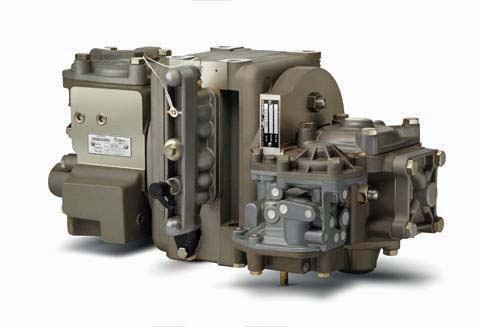
Kicking Horse River British Columbia - While it's still not known why the train was in emergency, the conductor of the first crew placed
75 percent of the cars retainers in the HP (High Pressure) position, and then apparently waited two hours for the relief crew to arrive (by Hy-Rail truck
according to a report).
US practice is to tie enough handbrakes to hold the train on the grade and recharge the brakes, then do a minimum set, and release the hand
brakes.
It can be presumed that the relief crew released the brakes on the train to recharge the brakes thinking the retainers would hold the train on the
grade.
But sitting for two hours in sub zero temps (-20C to -30C according to reports), enough of the older cars bled off the air to no longer be able to hold the
train.
That still begs the question why the crew didn't bail as soon as the train began to move.
They should have realized there was no saving the train as soon as it began to move with little or no air in the system.
With today's air brake equipment, which I believe utilizes pressure-maintaining brake valves on the locomotives, is it possible for the train line, and
individual car reservoirs, to be recharged while keeping the brakes on each car in full-emergency application while the train is standing for a period of
time?
The fundamental design principles of automatic air brakes haven't changed since 1888.
This means that once feed valve airflow to the brake pipe has been cut-off, what you refer to as "pressure maintaining" would not be
functional.
For those who read air brake manuals, there are references to two kinds of pressure maintaining: 1) maintenance of a specific level of brake pipe reduction
against leakage which would increase the brake application on the cars in the train, and 2) after an application has been made, maintenance of brake cylinder
pressure against leakage by drawing air from the brake pipe.
1) is the one most widely known and talked about, particularly on these forums, and once the train is in emergency, there is no brake pipe pressure in need of
maintaining.
In the case of 2), with the train in emergency there is no brake pipe pressure for the control valves to draw upon to keep the cylinders
pressurized.
It has never been possible to put a train in emergency and still be able to recharge the reservoirs on the train from the locomotive's automatic brake valve
without setting sufficient handbrakes beforehand because even though pressurizing the brake pipe is what charges the reservoirs, it also releases the
brakes.
Most if not all of the cars in question undoubtedly have (or had) ABD or newer control valves.
These have what is called "accelerated release", when the control valve goes to the release position, it takes air out of the emergency reservoir to
assist recharging the brake pipe.
Thus, if one of the control valves was defective enough somewhere in its diaphragms, pistons, and valves to allow internal leakage to move the valve's
mechanism to release, the resulting dump of air from its emergency reservoir into the brake pipe would be enough to trigger other control valves to do the
same.
The net result would be a cascade effect resulting in a complete release of the brakes on the train.
Author unknown.
provisions in Section 29 of the Canadian
Copyright Modernization Act.


